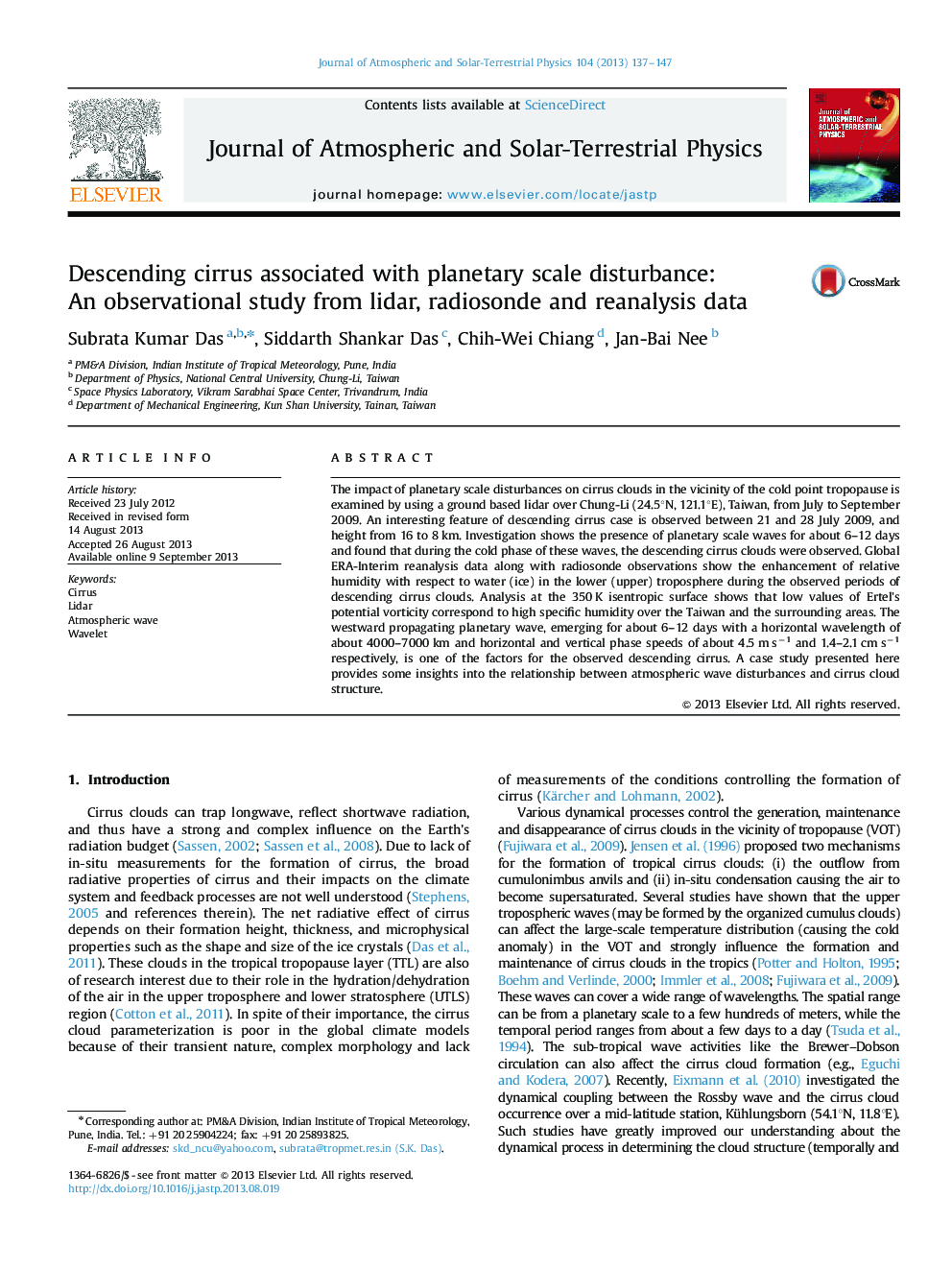| Article ID | Journal | Published Year | Pages | File Type |
|---|---|---|---|---|
| 8140476 | Journal of Atmospheric and Solar-Terrestrial Physics | 2013 | 11 Pages |
Abstract
The impact of planetary scale disturbances on cirrus clouds in the vicinity of the cold point tropopause is examined by using a ground based lidar over Chung-Li (24.5°N, 121.1°E), Taiwan, from July to September 2009. An interesting feature of descending cirrus case is observed between 21 and 28 July 2009, and height from 16 to 8 km. Investigation shows the presence of planetary scale waves for about 6-12 days and found that during the cold phase of these waves, the descending cirrus clouds were observed. Global ERA-Interim reanalysis data along with radiosonde observations show the enhancement of relative humidity with respect to water (ice) in the lower (upper) troposphere during the observed periods of descending cirrus clouds. Analysis at the 350 K isentropic surface shows that low values of Ertel's potential vorticity correspond to high specific humidity over the Taiwan and the surrounding areas. The westward propagating planetary wave, emerging for about 6-12 days with a horizontal wavelength of about 4000-7000 km and horizontal and vertical phase speeds of about 4.5 m sâ1 and 1.4-2.1 cm sâ1 respectively, is one of the factors for the observed descending cirrus. A case study presented here provides some insights into the relationship between atmospheric wave disturbances and cirrus cloud structure.
Related Topics
Physical Sciences and Engineering
Earth and Planetary Sciences
Geophysics
Authors
Subrata Kumar Das, Siddarth Shankar Das, Chih-Wei Chiang, Jan-Bai Nee,
